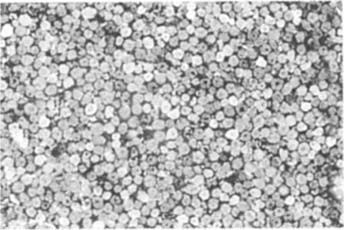
Topics in Photographic Preservation 2001, Volume 9, Article 5 (pp. 73-84)
The Austrian National Library acquired a collection of 213 autochromes by Heinrich Kuehn. These photographs were treated at the Conservation Department and will be the subject of a research project in the Pictures Archive. The features of the autochrome process are described as well as Kuehn's experience and work with this colour technique. The article explains the condition and the conservation treatment of the plates that was the result of a close co-operation among conservators, curators and scientists.
Photography with autochrome plates was the first widely used process of colour photography. The process was invented by the brothers Lumiére in 1903 and was made commercially available in 1907. An autochrome plate consists of a glass plate, a colour filter layer made of blue-violet, green and red starch grains (fig. 1) and a layer of silver gelatine emulsion. In the camera the incoming light is filtered by the coloured starch grains before hitting the light sensitive gelatine layer. Development and redevelopment renders a colour transparency. When the plate is regarded in transmitted light or is projected, the additive mixture of light results in a colour-image. Heinrich Kuehn immediately started to experiment with this new technique and created wonderful examples of early colour photography between 1907 and 1913. Kuehn did not just perceive autochromes as a technical experiment but as a way of creating balanced colour compositions. The plates acquired from the estate of Heinrich Kuehn are an important collection and their conservation is the beginning of further photo historical research.

fig. 1: Colour filter layer, × 60
The principle of colour photography consists of the fact that by mixing three selected colours all colours can be rendered. The printer Jacob Christoph Le Blon intuitively recognized this principle when he created coloured prints in the early 18th century. Thomas Young stated in 1802 that we can see colours because there are colour receptors for red, green and violet in the retina. The white light that we perceive is a mixture of these three colour impressions. Hermann Helmholtz (1821–94) realized the difference between additive mixture of the three primary colours red, green and violet and subtractive mixture of the three primary colours red, yellow and blue. In 1861 James Clerk Maxwell demonstrated at the Royal Institution of Great Britain that in photography all colours could be rendered by mixing the three primary colours. The photographer Thomas Sutton prepared four glass plate negatives that had been photographed with a blue, a green, a red and a yellow filter respectively. The glass plate positives were projected with the same filters over one another and could thereby reproduce all the colours of the Scottish flag. In 1869 Charles Gros and Louis Ducos du Hauron independently developed the principles of colour photography: Light must be separated by coloured filters before reaching the light sensitive emulsion. The synthesis of colours when viewing a photograph can be achieved by superimposing three monochrome colour layers or by the additive mixture of coloured light. The colours for the filters must be complementary: a green filter for red, a violet filter for yellow and an orange filter for blue. Ducos du Hauron proposed to use a screen where the light could be filtered by a transparent paper with grains in three colours. The grains should be very small and of equal size. In 1892 Leon Vidal was inspired by the ideas of Gros and Ducos and produced coloured images by projecting transparencies in three different colours over one another. In 1894 the Irishman John Joly tried to create coloured photographs with a linear screen. With transparent colorants (red, green, blue-violet) he drew parallel lines on a glass plate. This screen was brought in contact with a photographic emulsion. The light that was filtered through the linear screen produced a photographic negative from which a positive could be made that was then projected in contact with the coloured screen (1).
The genius of the brothers Lumière was to pick up those ideas and to technically put them into practice. Antoine Lumière was a photographer. In 1882 he founded a factory in Lyon that produced glass plate negatives. His sons, Louis (1864–1948) and Auguste (1862–1954), joined their father in the management of the factory after having received training in science at the “école de la Maritinière”. Their inventive spirit resulted in numerous patents that ranged from the invention of cinematography in 1895 to the treatment of tuberculosis. Louis Lumière concentrated more on photography. In 1896 he started to tackle the problem of colour photography. On December 17th, 1903 the autochrome process was patented. On March 30th, 1904 the new process was presented at the Academy of Science in Paris. Louis Lumière had worked for seven years to invent photography with autochrome plates: “To invent cinematography was easy and when this was done, I started to study the problem of the reproduction of colours. But it took me seven years of permanent work to develop such a simple procedure as the autochrome plates. (….). During this time I did nothing else and fortunately I had not other worries than to resolve every problem that came up. (….) I never lost confidence, despite my surroundings that tried to persuade me to give up.” In his experiments Louis Lumière referred to the findings of Ducos du Hauron. The appreciation of the work of Ducos du Hauron by the brothers Lumière was reflected by the fact that Ducos received a pension from them until his death in 1920. Based on the proposals of Ducos du Hauron Louis Lumière tried to produce coloured slides with the additive mixture of coloured light although he encountered immense technical problems. He was trying to find suitable grains. Potato starch grains were easy to tint. Since only small grains (0.011 to 0.15mm) could be used, a filtering system needed to be used. The starch grains were floated on a water bath whereby the heavy grains sank to the bottom, the small grains were taken away by a light water current and were filtered. Francisque Demeure was responsible for providing the appropriate potato starch grains. He established a factory in Juré where the starch grains were sorted, dried and transported to Lyon. Their size ranged from 12–16 μm. The colour chemist Alphonse Seyewitz (1839–1940) worked intensively with the brothers Lumière and was responsible for choosing the colorants. The recipes for dyeing the grains were held as a strict secret. In 1905 a factory was founded in Montplasir close to Lyon where autochrome plates were produced. The production started in the summer of 1907. The demand was high. Until 1913 6000 plates were produced per day. Until 1936 the autochrome process was dominant in colour photography. In 1931 the glass plates were exchanged for film material, the product was called filmcolor. In 1936 the introduction of colour films according to the subtractive principle, superseded the additive approach of the autochrome plates. In 1955 the last additive film was produced.
Photography with autochrome plates was highly appreciated among amateur photographers that formed international co-operations at the end of the 19th century. The movement for fine art photography had its centres in Hamburg, London, New York and Vienna. With autochrome plates a “naturalistic” reproduction of nature was possible. In the autochrome process the pictorialists saw the realization of one of their central aims being that from now on photography had the same means of creative expression as painting: Nature could be reproduced in its natural colours. Heinrich Kuehn perceived the development of fine art photography as having reached a point where photography influenced painting and not the other way round. In 1907 he declared: “The fact, that all the transitory phenomena of high pictorial attraction which are produced as if by magic by sun, clouds and mist, either directly or through reflection, can now, through the autochrome plate, be recorded in colour almost without ease, will become important for naturalistic painting in the future.” (12).
The production and use of autochrome plates
The potato starch grains were coloured with alkaline dyes in the colours green, blue-violet and red-orange. The dyed starch grains were mixed until a neutral grey was reached. The proportion of green was highest, followed by blue-violet and lastly by red-orange. Glass plates with a diameter of 0.9 to 1.8mm were cleaned and cut to 20 × 84 cm. A latex-varnish was applied and the coloured starch grains were dusted over the sticky surface. Any extra grains were brushed off. The space between the grains was filled with carbon. An average of 6000 to 7000 grains were applied per m2. The plates were laminated to reduce thickness and to increase transparency. During laminating needles were driven with high pressure (5000 kg/cm2) over the plates. The crushed grains were coated with a second varnish layer, dammar in benzene, to protect the screen and to further enhance transparency. A fine panchromatic emulsion (0,6 μ) was applied on top of the varnish. Here the brothers Lumière could rely on their experience in the production of glass plate negatives. After drying four plates were packed in a box interleaved with black cardboard. Four coloured plates each measuring 13 × 18 cm were sold for the same price as 12 black and white plates.
The autochrome plates could be used with normal contemporary photographic equipment. During exposure a yellow filter had to be used to compensate the high blue-sensibility of the emulsion. Exposure was carried out through the glass plate and the colour screen. The thickness of the glass plate had to be added when adjusting distance. Due to the grain layer the light sensitivity of the autochrome plates was low. Exposure times were 10 to 100 times longer than with black and white plates. For many photographers this low light sensitivity represented a major disadvantage to the process. The plates were developed once. The second development yielded a transparency. Development was easy and could be carried out while travelling. It was not possible to produce a print in the same colour quality from an autochrome. Autochromes are unique (2,3,4).
The first development was done with pyrogallic acid (2 min 30 s) in the darkroom. The plate was rinsed in water, then the silver image of the negative was bleached with potassium permanganate. All further work could be carried out in daylight. The plate was exposed for a second time at strong light, for three to four minutes, and than developed in a solution of sodium sulfate and amidol. After rinsing the positive image could be intensified with a solution of pyrogallic acid and silver nitrate. The plate was fixed in a sodium hyposulfate solution. The final stage of processing was rinsing the plate in running water. Drying had to be carried out as quickly as possible to avoid lifting of the gelatine layer. The dried plates were varnished with dammar resin in benzene. The surface of the autochrome was usually protected with a second glass plate. The glass plates were joined together with gummed or heat activated tapes. During the first years of production photographers complained about the lifting of the emulsion and the filter layer during processing. As a result the brothers Lumière recommended the use of a metaquinone-developer (2 N methyl-p-amino phenol in hydroquinone). Processing was made easier because the developer solution could be used for first and second development. The metaquinon developer was less damaging to the gelatine layer. High temperature of the bleaching solution or touching the wet plates with fingers could also cause lifting of the emulsion (3).
Autochromes were projected or viewed in transmitted light in a so-called “Diascope”. The plate was placed at a 45° angle over a mirror with the light coming from the back. With the help of opaque glass or transparent paper the diffusion of the light could be improved. Side protectors kept out light from the exterior. In Vienna the company Lechner produced viewing devices for Autochrome plates (5). When projecting the plates the filter grains could be visible. When viewing autochromes a light source should be used that is similar to the light during exposure, otherwise the colours have a different appearance (6).
Arthur Huebl tried to verify if autochromes reproduced colours correctly. He concluded that the colours are true provided an adequate yellow filter was used during exposure. This could be made by the photographer. A gelatine solution was dyed with a colorant and poured onto a glass plate. In the journal “Photographische Rundschau” Huebl gave the exact recipe for the filter (7). Exposure with light that was not white could be corrected with filters. When viewing autochromes the appearance of the colours depended on the light source used. With filters warm light sources could be corrected. Filters had the disadvantage to further reduce the light intensity of the plate. The image appeared darker (7,8). In his book “Farbphotographie mit Autochromplatten” Huebl stressed the importance of correct exposure. During processing the plates needed to be handled with great care as the emulsion had a tendency to fog. Huebl recommended working with solutions at 16°C or to dry the plate after the second development. With pyrogallic acid the image could be locally intensified. Huebl recommended dammar in benzene as a varnish. Plates that were used for projection should not be varnished.
The fine emulsion that is rich in silver is mechanically and chemically very sensitive to damage. The gelatine layer can easily be scratched. Pollutants can oxidise the silver grains and silver mirroring or stains can be the result (3). Dark brown or black stains can be caused by an incomplete reversal treatment when the reversal solution was exhausted. In the permanganate bath brown stains could be produced when the plates were not properly rinsed afterwards. E. J. Walls preferred a bichromate bath to the permanganate solution although improper rinsing could again result in brown stains. With over exposure the colours appeared opaque because during the second development not enough silver halides were present (6).
Bertrand Lavèdrine analysed the dyes of the filter layers. The colours vary from plate to plate, mostly the blue-violet grains whose hue range from pure blue to pure violet. These variations are the results of differences in production but also of the aging behaviour of colorants. Chromatographic analysis showed that the dyes are acidic or alkaline synthetic colorants, which contain triphenyl methane, xanthene and monoazo dyes. Bertrand Lavèdrine tested the stability of the filter layer during light and during dark aging. The violet grains, followed by the orange grains, exhibit the poorest light stability during light aging. The green grains changed the least. The varnish layers retard colour change. The yellowed varnish compensates the loss of yellow colour. High humidity speeds up colour change. During aging the hue shifts to warmer tones and than turns yellow-green. During dark aging the green grains are the least stable, the red-orange grains range in the middle field while the blue-violet grains are the most stable. The colour of the blue-violet grains shifts to violet. The red-orange grains become more yellow. Dark aging also results in a warmer overall tone (4).
Heinrich Kuehn, a prominent photographer of the pictorialist movement and an ardent fighter for the recognition of photography as an art, was born in Dresden, Germany, in 1866 Kuehn studied medicine where he had his first encounter with photography. For health reasons he moved to Innsbruck, in Tyrol. There he gave up his medical studies and dedicated himself to photography only. His father's fortune provided him with the necessary financial support. In 1894 Kuehn married Emma Katzung with whom he had four children. Kuehn became a member of the Viennese Camera-Club and started to experiment with gum prints. Close co-operation and friendship with Hugo Henneberg and Hans Watzek resulted in the foundation of the “Viennese Trifolium”. Under this name the three artists exhibited together. In 1904 Kuehn met Alfred Stieglitz. The two men became close friends. Their friendship is documented by a rich correspondence. Kuehn founded a school for photography in Innsbruck. He published in numerous photographic journals. These efforts to earn money were made necessary by the loss of his fortune in 1910. Kuehn had to sell the art nouveau house that he himself had designed and moved to Birgitz, a suburb of Innsbruck. Kuehn developed a correcting lens and published two books on photographic technique. He died 1944 in Birgitz.
In the summer of 1907 Heinrich Kuehn met with Alfred Stieglitz, Edward Steichen and Frank Eugene at Lake Starnberg, in Bavaria. Steichen had brought the first commercially available autochrome plates from Paris. Together the photographers started to experiment with the new technique. Kuehn worked with autochromes between 1907 and 1913, in two periods of intense production. The first period started in the summer of 1907 and lasted for eight months. It was followed by a second occupation with autochromes around 1912/1913. In the collection of the Austrian National Library 18 plates are signed and dated with 1907, 1908 and 1912 (10). In two publications, an article in the journal “Photographische Rundschau” (1907) and a chapter in his book “Technik der Lichtbildnerei” (1921), Kuehn reflected on his experiences with autochrome plates. The period 1906/1907 represented a marked change in the work of Heinrich Kuehn concerning his motives. Kuehn also developed a growing interest in formal experiments. Greater influence on his work was now exerted by American photographers such as Gertrude Kaesebier or Edward Steichen. From 1906 on, Stieglitz regularly showed Kuehn's work in the “Little Galleries” of the “Photo-Secession” in New York. Photographs by Kuehn were published in 1906 and 1907 in “Camera Works”. During the meeting in Bavaria in 1907, Kuehn also became acquainted with the works of other American pictorial photographers which he started to collect. The relationship to the Viennese Camera Club became loose, especially after the death of Watzek. The third member of the “Trifolium” Henneberg completely withdrew from photography. The second major event in Kuehn's life was the death of his wife in October 1905, shortly after the birth of their youngest daughter Lotte. Kuehn engaged the English governess Mary Warner to take care of the four children. In 1906 he moved with his family to a newly built house in Birgitz where many portraits and studies were taken. Between fall 1907 and spring 1909, the autochromes were often exhibited in Europe and five times by Stieglitz in New York. In 1908 one of Kuehn's autochromes was broken at the tenth anniversary exhibit of the Viennese Photo Club in the gallery Miethke in Vienna. Kuehn declined the honorary membership of the club as he thought this plate to be one of his best. After 1909 Kuehn's interest in autochromes diminished. Stieglitz had criticised Kuehn for the way the latter had presented autochromes and prints in the section “fine art prints” at the “International Exhibition of Photography Dresden 1909”. In this time the former enthusiasm for autochromes changed to the contrary. At exhibits autochromes could only be viewed with strong light from the back that made complicated installations necessary. The public felt that autochromes did not fit in with large prints that looked like oil paintings. Around 1912 Kuehn took up photography with autochromes again. Approximately at the end of 1913 Kuehn ended his experiments with autochromes. In a time of financial constraint, the high material costs and the few sales of the plates made the practice of this technique no longer affordable for Kuehn.
Kuehn's preferred themes were classic motives of fine art such as portraits, group sittings, still life and landscapes. Among the autochrome plates still life and group portraits of Mary Warner and his four children Walther, Edeltrude, Hans and Lotte are the dominant motives (fig. 2). Compared to other pictorialists Kuehn demonstrates the most the specific qualities of photography with autochromes and the new possibilities for image creation. Kuehn demands that photographers “have to compose with colour and have to learn to see in colour” (11). He was continually preoccupied with light and tonal values. He created a series of well-balanced colour compositions that he called tonal studies or light studies. A pictorial impression should be achieved with impressionistic means, by intense colour and “optical correctness”. The appearance of a photographic image needed to be similar to the visual perception of human beings: sharpness in the centre and diffusion towards the margin. Peter Henry Emerson first proclaimed the creative use of diffusion, of the out of lens-effect, in his book “Naturalistic Photography for Students of Art”. Hermann Helmholtz's research on the theory of visual perception, supports this movement from a scientific point of view. Kuehn was strongly influenced by Helmholtz's teachings on colour theory. Helmholtz (1821–1894) was probably Kuehn's teacher during his scientific formation in Dresden. Kuehn seems to abolish any distance to nature through the visual effect of bright colours and light as well as the casual arrangement of persons in a rural or domestic environment. A photograph should “show us nature as we have seen it with emotional interest”. According to Kuehn a photograph should express “subjective truth and inner perception”. Colour became a central means of creation.
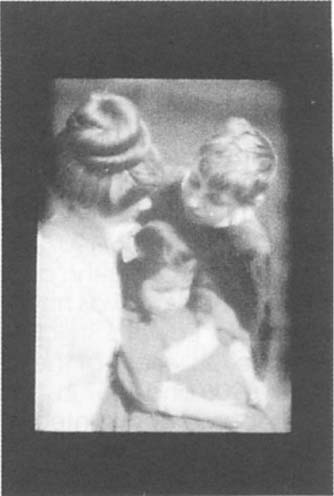
fig. 2: Mary Warner, Hans and Lotte, 1908, 24 × 18 cm.
Heinrich Kuehn was very satisfied with the quality of the first plates that were commercially available in June 1907. But he claimed that on later products the emulsion and the filter layers lifted easily. Quick drying during processing could counteract this deficiency. The plates needed to be exposed at good light for not too short a time. The autochrome plates worked soft, it was absolutely necessary to use a yellow filter during exposure. After exposure the plate needed to be quickly processed. Kuehn judged the directions given by the brothers Lumière as trustworthy. During processing one had to work very precisely and keep all instruments clean. A well-exposed plate could by processed according to the manual of the brothers Lumière. But how could one judge a good exposure? Kuehn recommended working with two plates. One plate should be exposed according to the reading of the photometer the other one half the time longer. The first development should not exceed 2.5 minutes. For overexposed plates Kuehn used an used, exhausted developer. During the first development Kuehn controlled the plate, afterwards only after intensification. After the first development bath the plate was briefly rinsed and than immersed in the potassium permanganate solution for 1 to 1.5 minutes. The plate was rinsed again and dried with a centrifuge or a fan. The second development was carried out in the light in an amidol- developer (1–1.5 min). The plate was rinsed and eventually dried. Now it could be intensified (0.5–1 min). After intensification the plate was rinsed, fixed and washed (2–4 min). The final drying should be carried out quickly, with a centrifuge or a fan. Kuehn complained that the beautiful, warm tone of the plate is lost after the second development. Lifting layers could be consolidated with a solution of caoutchouc in benzene Kuehn was not successful in removing stains with the solution recommended by the brothers Lumiére because the solution damaged the emulsion. Kuehn scratched off the stains and impainted the losses with watercolours. The dry plates could be varnished with dammar. Kuehn judged the results that can be obtained with autochromes as fabulous although he saw a major disadvantage in the fact that reproductions were difficult. Good results could be achieved with portraits. Kuehn recommended to be cautious with photography of intense colours. He stressed the importance of a fine sense for colours (14).
In his book “Technik der Lichtbildnerei” published in 1921, and maybe seen as a resumé of his work, Kuehn dedicated a whole chapter to “Transparencies in natural colours (Autochromes)”. Contrary to Huebl, Kuehn wrote that autochromes reproduced colours “more in a picturesque than in an exact way”. The major drawback of autochromes was the inability to use them as an intermediate state for a colour print. It was “only” possible to create beautiful coloured glass images. A saturated yellow was difficult to reproduce. Most of the times yellow appeared dirty grey. Only with very short exposure times could yellow tones be shown more or less true. There was a danger that the blue of the sky appeared too “aniline-blue”, especially when working in the mountains in clear weather. The quality of the green grains had declined during the years of production. According to Kuehn the filter layers of the first autochromes were better but the emulsion lifted easily. Kuehn judged that the colours had good light stability. The colours that could be achieved with autochromes blended well together at the expense of truth to nature. The thin emulsion layer equalised strong contrast. It was possible to achieve picturesque images. Kuehn recommended to either work with the same developer and a constant developing time of two and a half minutes, when the exposure was correct. The other way would be to modify the developer depending on the result of the exposure. Kuehn preferred constant developing times. According to his advise the instructions of the brothers Lumière should be followed and not those of simplified versions. At daylight the normal filter recommended by the brothers Lumière should be used. The quality of the water used during processing could influence the colours. In some areas the local tap water could lead to a reduced colour gamut. Kuehn concluded the chapter on photography with autochromes: “All in all the autochrome process stays for us nothing else than a very beautiful and highly interesting experiment. With its results of the wonderful blending of tones it shows us the goals that we have to set ourselves for the picturesque colour print.” (15).
The Austrian National Library acquired 213 autochrome plates from the estate of Heinrich Kuehn in Birgitz. This collection is probably the largest holding of autochrome plates by Kuehn and by other pictorialist photographers. It is difficult to estimate how many autochromes Kuehn created. It can be assumed that a large part of autochromes have survived at the estate of the family Kuehn-Schoenitzer in Birgitz. The private collection of John Wood has eight autochromes by Kuehn (16), the Gilman Paper Company Collection owns three autochromes (17), and about ten plates can be found in the International Museum of Photography at George Eastman House in Rochester. It is known that some autochromes of Kuehn were broken during exhibits in the seventies and eighties. In comparison to other pictorialists a lot of Kuehns autochromes have survived: Eduard Steichen created hundreds of plates in England, Germany and Italy. All but 40 plates were destroyed during World War I. Approximately 100 autochromes by Alvin Landgon Coburn, 25 by Alfred Stieglitz, 16 by Clarence White, 7 by Frank Eugene and 6 by Adolf de Meyer have been preserved.
During an assessment in 1988 the autochromes from the estate of Heinrich Kuehn were rehoused in acid free four flap enclosures and cardboard boxes by Light Impression. The following formats can be found:
Three plates had been cut and differ from the standard formats.
160 of 213 plates were in need of conservation treatment. Many plates had no cover glass and approximately half of the autochromes was not varnished. Without securing the plates further handling and reproduction would not be possible. Plates that were broken or cracked were the most endangered. Five autochromes were completely broken. Other plates, that were generally in good condition, had broken corners. 157 autochromes had no cover glass as recommended by the brothers Lumière and 99 were not varnished, contrary to Kuehns advise in his book. Due to this lack of protection the gelatine and filter layers have suffered damage, especially at the edges of the plates (fig. 4).
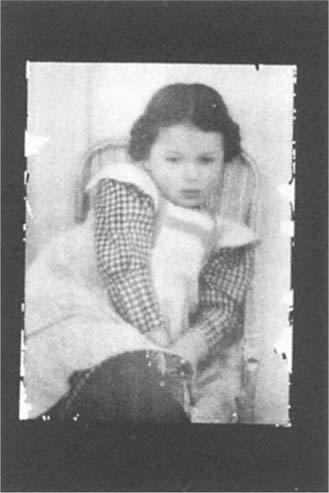
fig. 4: Lotte, 24 × 18 cm.
The gelatine layer and sometimes also the filter layer have lifted from the glass plate. Damage ranges from small pieces to large areas of loss. The detached layers are often wrinkled and folded (fig. 5). On 63 plates parts of the image are missing. The gelatine of the autochrome is very thin and vulnerable. The emulsion of unvarnished plates is often scratched. At the edges oxidation has led to severe silver mirroring that results in a shift of colour. Some plates exhibit stains due to oxidation processes. It is impossible to tell when the damage has occurred, during processing or during aging. The complex system of glass, starch grains, varnish and gelatine is very sensitive against changes in climate, especially without a final protective varnish or cover glass. The differing expansions and contractions of the various components lead to tensions that result in delaminations. It is remarkable how well the unprotected plates have survived a turbulent 20th century. Two plates with detachments have been consolidated by applying an adhesive over the whole surface. It was not analysed if this adhesive was caoutchouc as recommended by Kuehn in his writings.
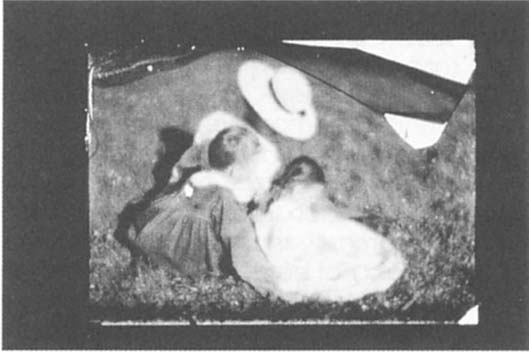
fig. 5: Mary Warner, Hans and Lotte on the lawn, 18 × 24 cm.
A particularity of Kuehn was the graphic use of the intensifier solution. Kuehn painted or drew with the intensifier to emphasize outlines or certain areas (fig. 6). Dark stains could be splashes of intensifier or a result of processing (potassium permanganate bath). On the varnished plates the varnish is sometimes applied very irregularly. Those areas coated with a thick varnish layer have yellowed to a greater extent that has resulted in a shift in colour. In transmitted light, yellowed varnish streaks can be observed. Signature and date were written with watercolour, pencil or coloured pencil onto the varnish. Retouched spots with blue or red pencil can be found directly on the glass. As described in his article Kuehn had presumably scratched off stains and retouched the resulting loss with coloured pencil.
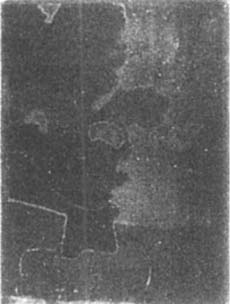
fig. 6: Mary Warner, 24 × 18 cm.
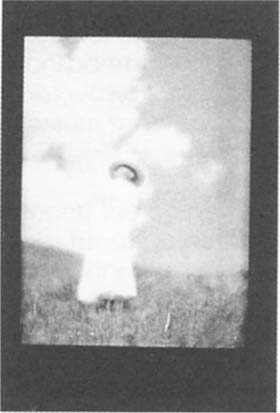
fig. 7: Mary Warner, 24 × 18 cm, transmitted light.
Out of 213 plates only 55 had an original cover glass. On 33 autochromes this protection consists of a clear glass plate (1mm) in contact with the emulsion side and an opaque glass in contact with the glass side of the autochrome. The three glass plates are secured at the edges with black textile or paper tapes. After consulting with Pascal Bedeck at the Musée Albert Kahn, Bertrand Lavèdrine and Jean-Pierre Gandolfo, it appears that this kind of mounting was rare and at least in France not common. None of the above mentioned could recall to have seen such a mounting. In the photographic conservation studio of the city of Paris, the conservator, Ragounathe Coridon, remembers encountering one or two autochromes mounted with frosted glass. Jean-Pierre Gandolfo assumes that the autochromes of Kuehn were meant for a single presentation with light from the back. The frosted glass might have been used to achieve a better and more uniform scattering of light during display. This would be in accordance to the descriptions of Walls (6), mentioned above. Until now no notes by Kuehn could be found in which he refers to the display of his autochromes and mentions the use of frosted glass. Between the cover glasses and the autochrome crystal deposits have developed. Most of the crystal deposits could be found between autochrome plate (glass side) and frosted glass (fig. 89–10). Between autochrome and clear glass there are no or only very few crystals. The crystals of one object were analysed by Manfred Schreiner and Dubravka Jembrih-Siebenbürger, at the Academy of Fine Arts Vienna, Institute for Science and Technology in Art,. Analysis was carried out with energy-dispersive X-ray-micro-analysis (SEM/EDX), fourier-transformed-infrared-spectroscopy (FTIR) and solubility tests. The crystals consist of sodium carbonate which is a corrosion product of glass. Sodium carbonate is formed on the surface of glass with a high content of soda. The sodium ions migrate out of the glass structure and react with carbon dioxide from the air. The formation of sodium carbonate is facilitated by a humid and closed environment. Frosted glass has a high sodium content that explains the fact that more and larger crystals were formed between autochrome and frosted cover glass.
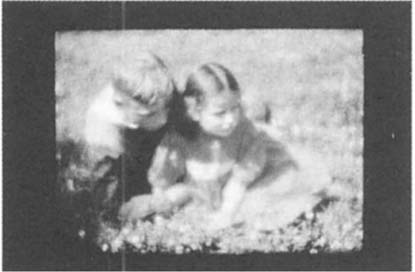
fig. 8: Hans and Lotte on the lawn, 18 × 24 cm, transmitted light, before treatment.
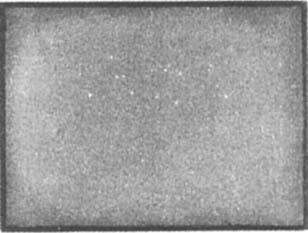
fig. 9: Hans and Lotte on the lawn, before treatment.
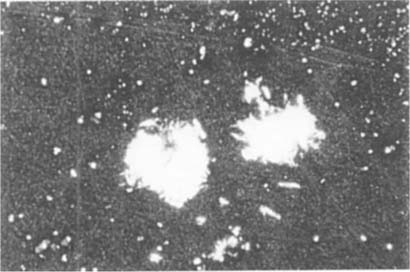
fig. 10: Crystall deposits on the frosted glass, × 32.
The tapes used for the original mounting were black textile and paper tapes. The brothers Lumiére sold heat activated tapes. The textile tapes could be these kind of tapes. The adhesive of the textile tapes was very brittle. Some of the paper tapes have become loose. Original tapes had previously been replaced with pressure sensitive tapes, black and transparent. The adhesive of the black synthetic tapes diffuses which can result in the plate sticking to the paper enclosure. The transparent tapes have become brittle and some have already fallen off.
The goal of the conservation treatment was to stabilize the autochromes in order to make the plates available to research and reproduction. The complex system of the autochrome plates makes a restoration treatment difficult. The colour filter layer is highly water sensitive. The gelatine layer is also reactive to high humidity. Solvents can affect the varnish layers. No approved and reliable method has been found so far for the consolidation of detached layers. We felt that with the precious Kuehn autochromes adhesives with unknown long-term effect to the various layers should not be used. The treatment was therefore limited to pure preventive conservation. A close co-operation among conservator, curator and scientist proved to be beneficial. We tried to find a solution that would preserve these unique artefacts and at the same time, making them available for research.
The emulsion side of the autochromes was dusted with a soft brush. The glass side was cleaned with a solution of acetone:water:ethanol 1:1:1. Cleaning of broken plates was only possible to a limited extent. Plates without a cover glass were protected on the emulsion side with a new 2mm float glass plate. All new glass plates were also cleaned with the acetone:water:ethanol mixture. New glass plate and autochrome were secured at the edges with a transparent polypropylene tape, Permacel J-Lar P 910. The stripes of tape were trimmed in order to avoid disfiguring the image. J-Lar P 910 consists of a methacrylate adhesive on a polypropylene backing. It was obtained from EIS-Electrical Insulation Supplier. According to Howard Hintermeister from the EIS location in San Francisco, the production of the tape has been changed but not the composition. J-Lar had passed the photo activity test a couple of years ago but because of the change in production, a sample of the tape was tested by Martine Gillet at the “Centre de Recherches sur la Conservation des Documents Grapiques” (CRCDG). The tape passed the Photo Activity Test in all three trials.
Flaking gelatine and colour filter layers were laid down mechanically with the new cover glass. Folded layers were smoothed and flattened as far as possible and held in place by the pressure of the cover glass. As previously mentioned, no experiments were carried out with adhesives with unknown aging properties.
Original old mountings that were in good condition were left untouched. Only the glass sides were cleaned with the acetone:water:ethanol solution. The old mounting was taken apart when the tapes were loose or very brittle and no longer offered a secure connection. The mountings with frosted glass were separated when the crystal deposits represented a severe disfiguration. Large crystals appear as black spots in transmitted light that is aesthetically displeasing especially in the facial areas of portraits. The tapes were taken off mechanically. The clear and the frosted cover glasses were cleaned from tape residues and crystal deposits in a water bath. The autochrome plate was cleaned as described above. After complete drying the cover glasses were put back in the original order to protect the autochrome and the edges were secured with J-Lar tape. The transparent J-Lar tapes make the image visible to the edges. A reconstruction of the black tapes was avoided (fig. 11). The intervention should remain visible. Old cover glasses with pressure sensitive tapes were also taken apart, cleaned and remounted with J-Lar.
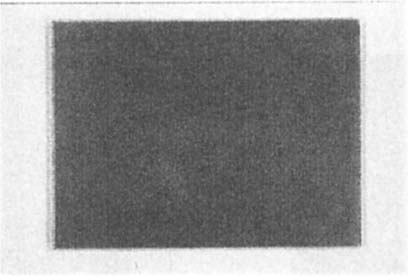
fig. 11: Hans and Lotte on the lawn, after treatment.
Broken plates were treated in the following manner: The cover glass was removed, if present. The glass side of the autochrome was cleaned as far as possible. The broken parts were inserted in a 5mm wide frame of museum board (Canson museum board 1.8 mm) and secured between two new glass plates (fig. 12, 13). In one case a broken matt glass was replaced with a new 3 mm matt glass. Autochromes with missing corners were also secured between two glass plates but without a cardboard frame.
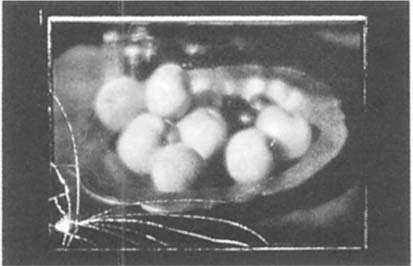
fig. 12: Still live with apples, 18 × 24 cm, transmitted light, before treatment.
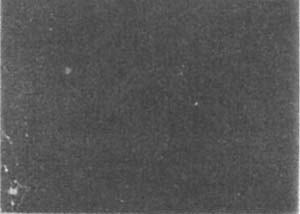
fig. 13: Still lives with apples, after treatment.
The storage in four flap enclosures and cardboard boxes by Light Impression was maintained. Only the plates measuring 18 × 24 cm were housed in custom made boxes (Klug) of acid free corrugated board. The so-called NOMI boxes by the Germany company klug offer a greater stability for the large plates. Autochromes differing from the standard formats were secured with pieces of corrugated board in the standard format. The boxes are stored in the underground storage area of the Austrian National Library at a controlled climate of 20°C and 40% relative humidity.
The authors are indebted to Jean-Pierre Gandolfo, Bertrand Lavèdrine, Pascal Bedek, Pierre-Emmanuel Nyborg and Jose Orraca for their helpful comments on the autochrome process. Analysis of the crystal deposits was carried out by Manfred Schreiner and Dubravka Jembrih-Simbuerger at the Institute of Science and Technology in Art, Academy of Fine Arts Vienna. Martine Gillet conducted the Photo Activity Test at the CRCDG. Howard Hintermeisier from EIS provided information on the production of J-Lar tapes.
1. NATHALIE BOULOUCH: “Rayon Lumineux, Particules de Couleur”, in: La Couleur Sensible, Photographies Autochromes (1907–1935), Musées de Marseille, Société française de photographie, Centre de la Vieille Charité, Marseille, 1997, pp. 11–19.
2. JEAN-PIERRE GANDOLFO: «Violet, Vert et Orangé: Trois Couleurs pour un Tamis», in: La Couleur Sensible, Photographies Autochromes (1907–1935), Musées de Marseille, Société française de photographie, Centre de la Vieille Charité, Marseille, 1997, pp. 11–19.
3. PIERRE-EMANUELLE NYBORG: Etude Bibliographique sur la Conservation des Autochromes, unpublished, Rochester 1987 – Paris 1988.
4. BERTRAND LAVÈDRINE: «Les Autochromes, Approche historique et technologique du procédé, Etude des problèmes liés à sa conservation» in Les Documents Graphiques et Photographiques, Analyse et Conservation 1991–1993. Paris, Archives Nationales, 1993, pp. 29–129.
5. Eders Jahrbuch der Photographie: “Fortschritte betreffend die Photographie mit Farbenrasterplatten”, Halle an der Saale, Knapp, 1910, pp. 180–197.
6. E. J. WALLS: “Die Praxis der Farbenphotographie” in Handbuch der wissenschaftlichen und angewandten Photographie, editor Alfred Hay, Wien, Julius Springer, 1929, pp. 188–210.
7. ARTHUR V. HUEBL: “Das Gelbfilter der Autochromplatte”, in Photographische Rundschau, Halle an der Saale, Knapp, 1909, pp. 1–20.
8. ARTHUR V. HUEBL: “Der Einfluss der Beleuchtung bei der Aufnahme und Betrachtung von Autochrombildern”, in Wiener Mitteilungen photographischen Inhalts, Wien, 1909, pp. 49–65.
9. ARTHUR V. HUEBL: Die Theorie und Praxis der Farbenphotographie mit Autochromeplatten, Halle an der Saale, Knapp, 1909.
10. UWE SCHOEGL: Heinrich Kuehn and the Autochrome. Lecture at the symposium “Photography & Research in Austria. Vienna, the Door to the European East”, in cooperation with the European Society for the History of Photography, Austrian National Library, Vienna 2001 (postprints in preparation)
11. ULRICH KNAPP: Heinrich Kuehn, Photographien, Residenz Verlag, Salzburg, 1988.
12. ELIZABETH POLLOK: “Das Leben des Photographen Heinrich Kuehn”, in Eine Ausstellung von hundert Photographien von Heinrich Kuehn, Muenchen, Zuerich, Koeln, Hamburg, Washington D.C., Paris. 1981–1982, pp. 5–14.
13. HEINRICH KUEHN: “Grundsaetzliches über Weichzeichner”, in Photographische Korrespondenz, 64. Bd., Nr. 9, Halle an der Saale, Knapp, 1928, pp. 281–285.
14. HEINRICH KUEHN: “Zur Technik des Autochromverfahrens”, in Photographische Rundschau, 21. Jhg., Halle an der Saale, Knapp, 1907, pp. 261–269.
15. HEINRICH KUEHN: Technik der Lichtbildnerei, Halle an der Saale, Knapp, 1921, pp. 219–228.
16. JOHN WOOD: The Art of the Autochrome. The Birth of Color Photography, Iowa City 1993.
17. The Waking Dream. Photography's First Century. Selections from the Gilmann Paper Company Collection, exhibition catalogue. The Metropolitan Museum of Art, New York 1993.
Permacel P/N 910 J-Lar-Klebeband
EIS Inc.
Electrical Insulation Suppliers
41444 Christy Street
Fremont, CA 94538–6105
USA
Tel: 510 490 5855, Fax: 510 490 2956
http://www.eis-inc.com/
NOMI Boxes
Klug Conservation
Walter Klug GmbH & Co. KG
Badeweg 9
D-87509 Immenstadt im Aligaeu
Tel: +49 8323 9653 30, Fax: +49 8323 7287
E-mail: info@klug-conservation.com
http://www.klug-conservation.com